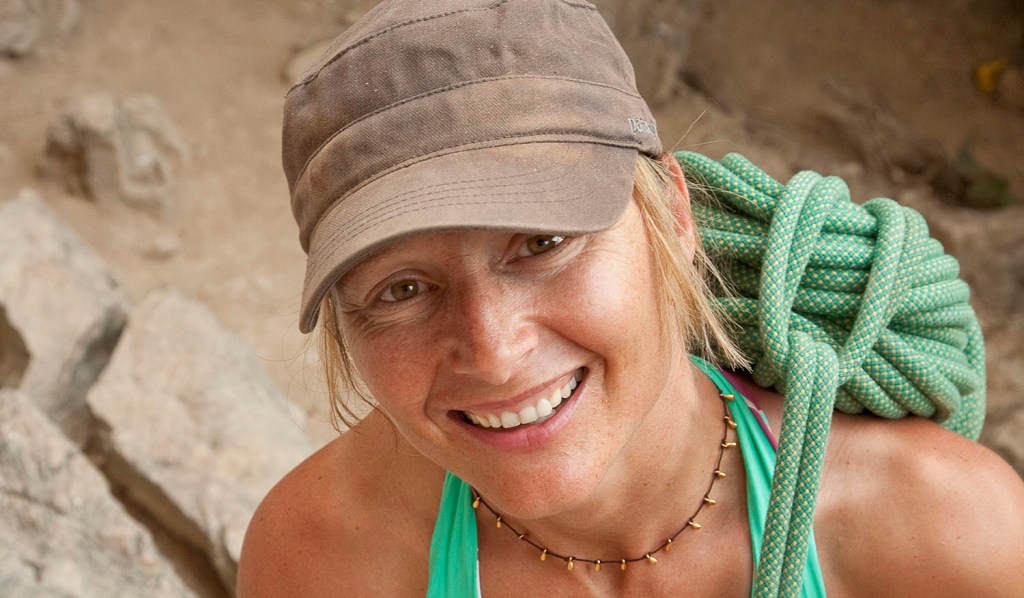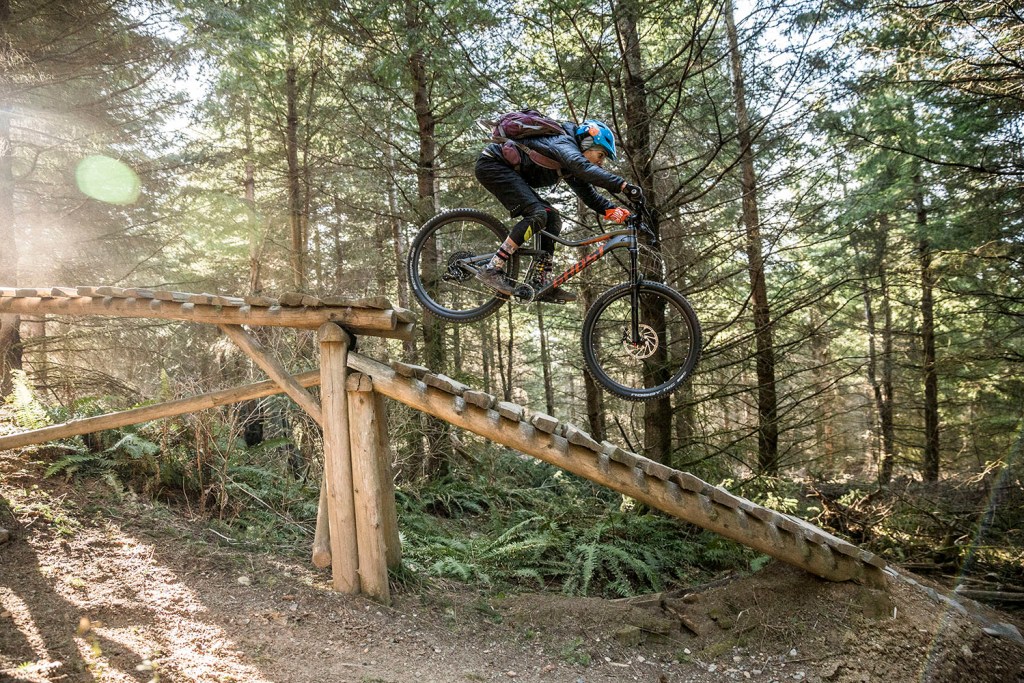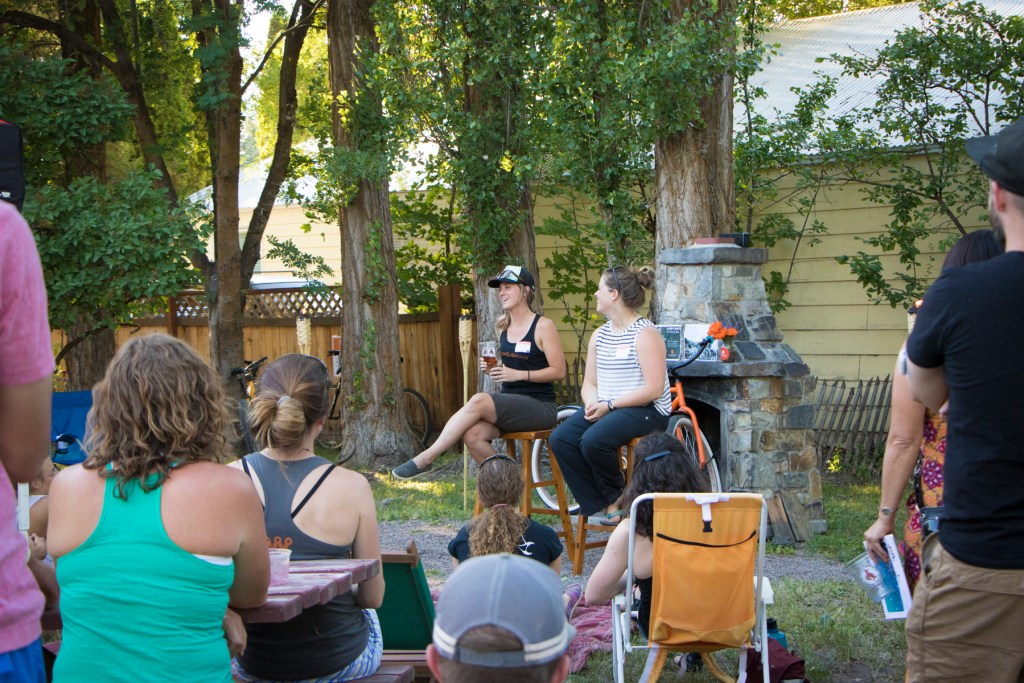Deanne Buck of Camber Outdoors talks women’s leadership and the influence of the outdoor industry on the nation
Growing up in rural Nebraska, Deanne Buck never felt a division between the indoors and outdoors. “When I think about my childhood, I was always outdoors. We were swimming at the lake. We’d go for bike rides. In the winter, we’d go ice skating,” Buck said. “The outdoors was just part of who I was.”
But it wasn’t until a friend introduced her to climbing, at a YMCA in Omaha, Nebraska, 25 years ago, that she started to make life decisions based on her love of the outdoors. As her passion grew, it even informed where she went to law school—the University of Colorado Boulder, naturally, because of its proximity to climbing.
Over the years, she’s worked as a river rafting guide and at a climbing gym. She’s advocated for conservation and access to public lands during her time at the Access Fund and the American Alpine Club. Today, her goal is to achieve equality for all women in the outdoors, from the backcountry to the boardroom, as the Executive Director of Camber Outdoors (formerly the Outdoor Industries Women’s Coalition).

Photo Credit: Nicole Friend
“It all ties back to sharing my love for being outdoors with others, and a desire to drive and sustain an industry that supports my passion, as well as a lot other [people’s passion],” Buck said.
Ahead of Women’s Equality Day, August 26, we caught up with Deanne to talk about gender equity in the outdoors and the work Camber Outdoors is doing to accelerate women’s leadership.
What does the current landscape look like when it comes to women’s leadership in the outdoors?
Women’s leadership, in general, is evolving on a national level, and the outdoor industry is fairly in step with the evolution. The outdoor industry is doing some hard work right now, which is looking at itself and looking at the current makeup of where women are in the workforce. I’ve seen many of our member companies take some very active, thoughtful and deliberate internal steps to understand why there aren’t as many women in leadership as there could be.
How does outdoor recreation participation among women compare to the percentage of women in leadership roles in the outdoor industry?
It’s not reflective. Women make up 46 percent of all outdoor participants, according to the Outdoor Foundation’s 2017 Outdoor Recreation Participation report. When I look at the silhouette of women’s participation in the workforce from entry-level to the CEO, the outdoor industry mirrors the national silhouette: Women come in at about 50 or 60 percent of entry-level. As we start moving up the leadership ladder, it’s anywhere from approximately 10 to 20 percent of women in the C-suites (top senior executive positions).

What do you think is notable about that gap between participation and leadership roles within the industry?
Our industry is not atypical of other industries where we see a drop-off of women from the manager and director levels to the next level of the workforce. Lean In released a study last year that reported for every 130 men who get promoted out of manager, 100 women get promoted out of manager. When we start thinking about a pipeline of talent, there are two ways to look at it. One way is that we can recruit talent into our industry at the executive level to ensure leadership teams more accurately reflect the consumer and participant experience. We can also look at how our companies are developing talent to advance current women into more leadership roles. There are a lot of reasons why women aren’t equally represented in the leadership teams as they are in participation. Our goal is to understand to those and to help create a collective knowledge base on how we can start changing that.
You said the outdoor industry is starting to take the right steps and move in a positive direction. Can you share a specific example of that progress?
The Camber Outdoors CEO Pledge that we launched two and a half years ago is a great example. When we launched it, we had 12 companies that signed it. Now we have 70. CEOs are committing to women’s leadership as a strategic priority for their business. The CEO Pledge provides a platform for CEOs and leaders to elevate talent. They’re considering women’s leadership as important as other the strategic priorities to which they hold themselves and their company accountable. It’s not a quota. But what it says is that CEOs are committed to examining where there are biases in processes.
In our National Study on Women and the Outdoors, 70% of women reported being outdoors is liberating and more than 85% agreed the outdoors positively affects their lives in many ways. But 6 in 10 women said men’s interests in outdoor activities are taken more seriously and 63% couldn’t think of an outdoor female role model. What role can the outdoor industry play in addressing this disconnect?
Ensuring that women’s voices are at the table when decisions are being made will be the fastest way to make sure women’s experiences are taken into consideration at every level of business decisions. And that’s not just for women’s-specific product; that’s for all product. This feeds directly into how the outdoors gets represented. When the people who are making decisions, whether it’s who gets highlighted in an article or what gets made or how it gets made, if those people have a singular point of view, then the decisions aren’t going to be relevant to the widest swath of people.
How could gender equity in the outdoors impact gender equity in general?
The outdoor industry can be a leader in positioning women’s leadership and gender equity—and being successful with it. One of the biggest opportunities for companies is supporting employees during transitional times, specifically for women as it relates to family. As an industry, we already give space for more dimensions in our lives and in our work because of our shared passion for the outdoors. Can we lean into that to be successful and to understand how to work with people during transitions in their lives? My hope is that as we’re accelerating success around women’s leadership, we become the example for the rest of the country.
What advice would you give women who are interested in turning their passion into their profession?
There’s a lot of things women can do. Our Camber Exchanges, hosted by our member companies, are a great way to start learning about company culture, what’s available and who is hiring. Our Career Center consists of companies who are committed to ensuring women are able to pursuing their career goals. Camber Outdoors has created a guide to getting into the industry. It helps to translate skills that people have and also what to expect. Volunteering for a nonprofit is another great way to start learning about the landscape. It’s really around connecting with people, getting to know some people who can vouch for or who can make an introduction for you. When you’re applying, let people know that you have that passion. It seems really obvious, but I can’t tell you how many cover letters and resumes I get where people don’t share why and how they like to get outdoors.

A Camber Exchange event hosted at Wheelie Creative (Photo Credit: Wheelie Creative)
What does success look like for Camber Outdoors?
I always say that success is when we put ourselves out of business. I think success is when the diversity of our leadership teams and our employee base reflects participation in the outdoors–our current and future participation base.
Editor’s Note: This interview has been edited for length and clarity.


